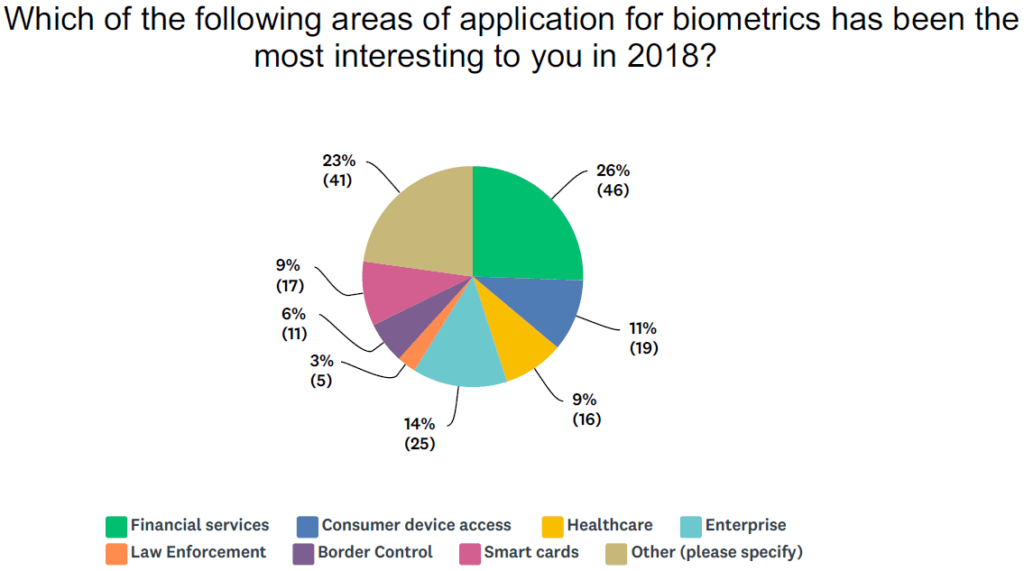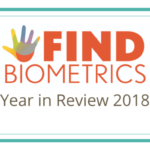People in the biometrics industry were really into FinTech last year, suggest the results to the second question of FindBiometrics’ Year in Review survey for 2018.
The question asked, “Which of the following areas of application for biometrics has been the most interesting to you in 2018?” and listed answers such as “Healthcare”, “Border Control”, and “Financial services”. The latter took the lion’s share of responses, at 26 percent.

Follow the Money

The popularity of financial services among biometrics industry experts makes a lot of sense. Financial services is one of the areas in greatest need of the kind of strong security offered by biometric technologies, with banks and other such organizations facing a strong market incentive to ensure that customers’ data – and their money – is protected, not to mention stringent government regulations further compelling them to do so.
It’s also an area with money to spend on innovative new technologies, and has proven itself time and again to be open to biometric innovations. Financial services providers were among the first to embrace Apple’s Touch ID fingerprint scanning system after its debut in 2013 for the purpose of securing customer accounts on mobile. And one of the more exciting recent trends in biometric authentication in recent years, behavioral biometrics, has started to really gain traction in the financial services area, where it’s been embraced as a frictionless extra layer of security.
The Runners-Up

The other leading modalities that piqued the interest of survey respondents were “Enterprise”, which took 14 percent of the responses, and “Consumer device access”, which got 11 percent. These aren’t huge surprises, either; indeed, the underlying drivers for both have some overlap with “Financial services”. A lot of companies are starting to embrace biometrics for things like employee authentication, such as to regulate access to sensitive IT assets; and they’re also using biometric authentication for customer login, just as banks are.
Meanwhile, the mobile fingerprint sensors that were so warmly embraced by the FinTech world after the launch of Touch ID saw the emergence of a big new rival over the past year in the form of facial recognition. This is thanks in large part to Apple’s launch of Face ID with the iPhone X toward the end of 2017, which spurred rivals to install their own ‘Face Unlock’ systems on smartphones launched in the ensuing months. And in the autumn of 2018, Apple further underlined its commitment to facial recognition by making it the central authentication system on all of its new iPhones. This has all made for a very exciting year for consumer device access, and that excitement is likely to carry forward well into 2019.
And Don’t Forget Everything Else

But there’s one more important result to note from the responses to Question Two of FindBiometrics’ Year in Review survey for 2018. The answer that actually came second was not one use case but many – the category of “Other”. It took 23 percent of the survey responses, but the specified applications comprising that share were varied, ranging from “Data centers” to “Travel and hospitality” to “National ID” to “All things IOT”. It’s an illustration of the wide range of uses for biometric technologies now that they have become mainstream; in this sense, this particular response to the question is highly illustrative of the overall state of the biometrics industry.
Which is to say, 2018 was a very exciting time in this field. And with all of these applications poised to continue their ascent in terms of absolute popularity, 2019 is likely to be even more exciting.
–
January 17, 2019 – by Alex Perala







Follow Us